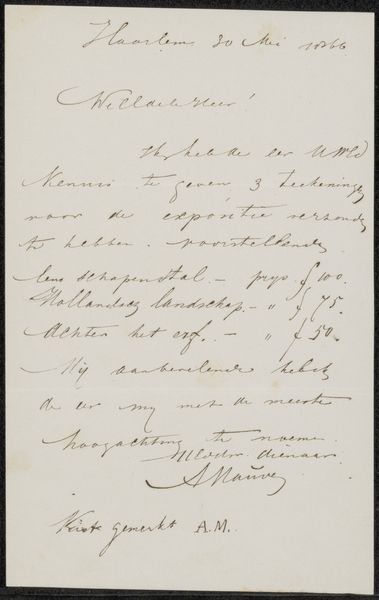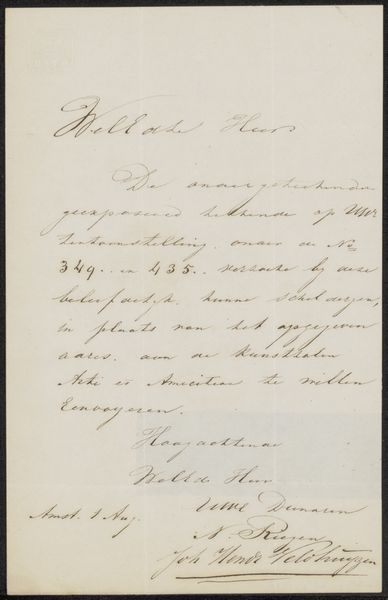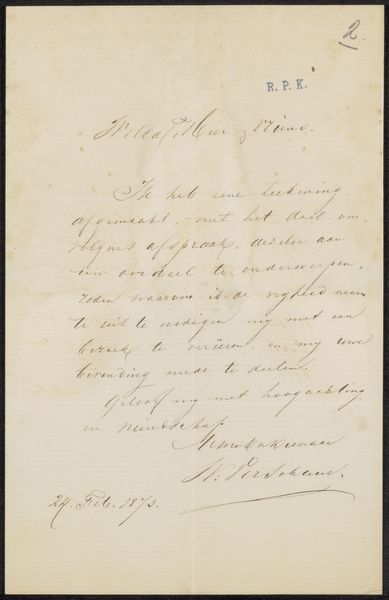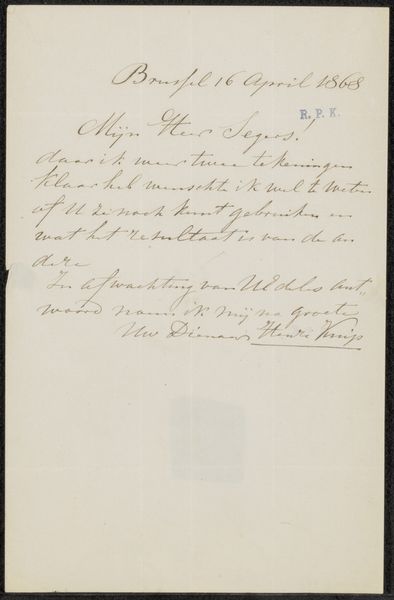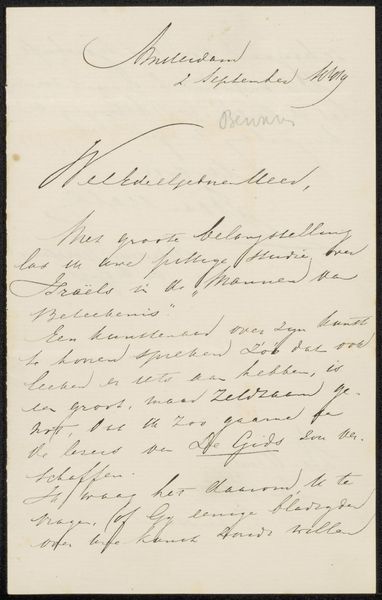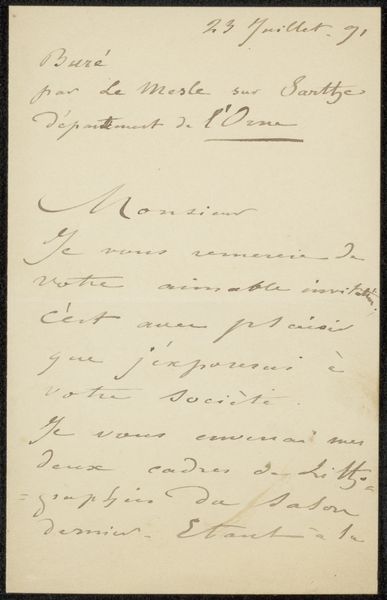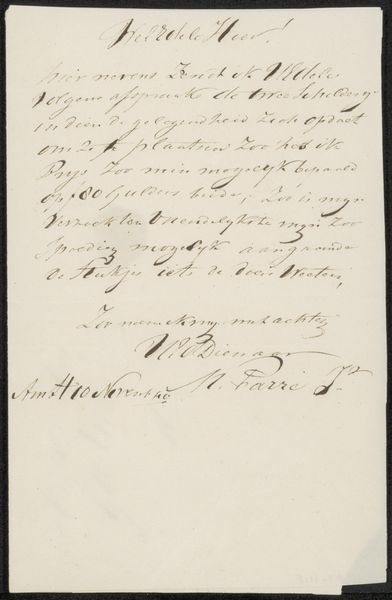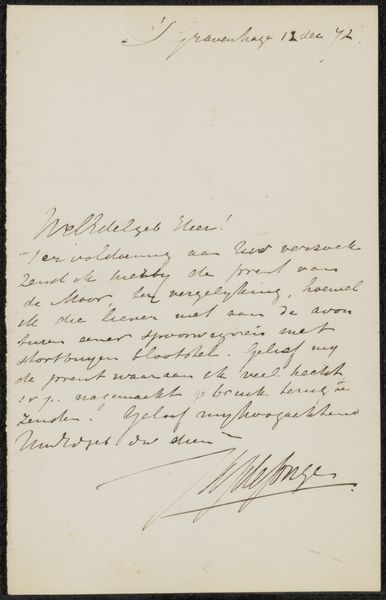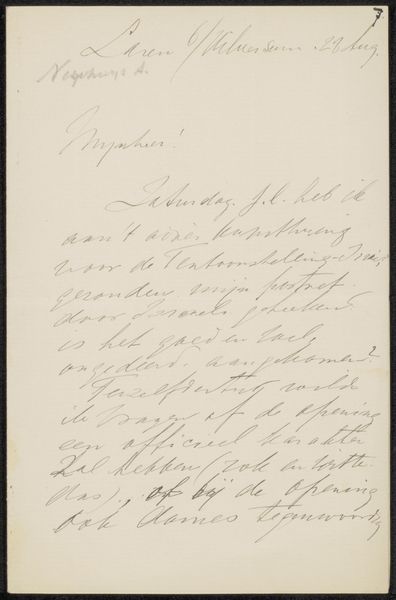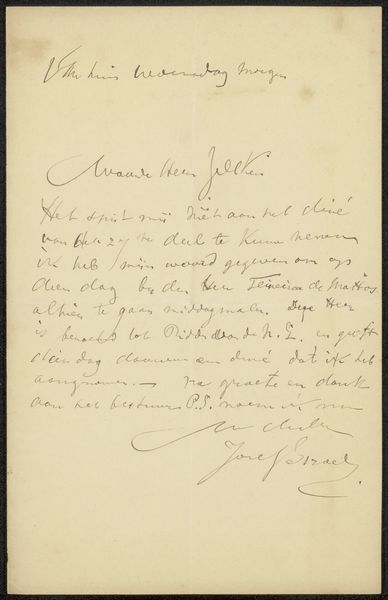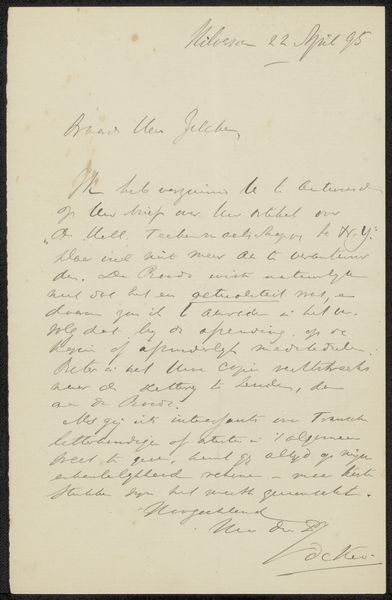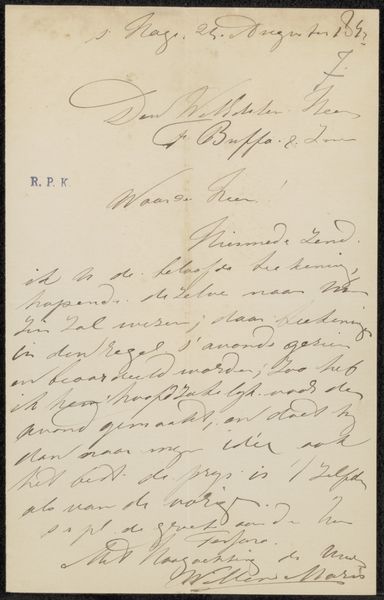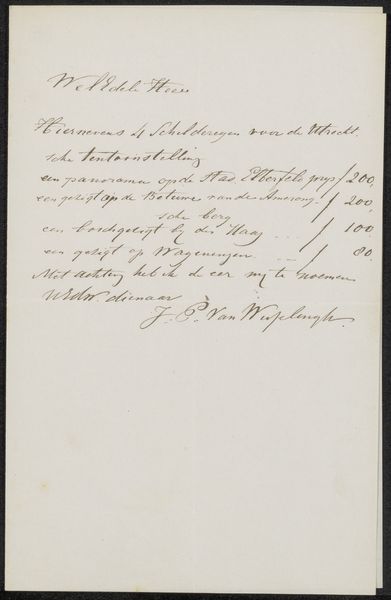
drawing, paper, typography, ink
#
portrait
#
drawing
#
paper
#
typography
#
ink
#
calligraphy
Copyright: Rijks Museum: Open Domain
Curator: This is "Brief aan Frans Buffa en Zonen," tentatively dated to 1867 and currently held at the Rijksmuseum. It's a drawing and text piece, ink on paper, bearing the signature of P. Blommers, who ran a lithography studio. Editor: The sheer verticality of it strikes me. And, well, it just looks like someone’s everyday correspondence, doesn’t it? There's something inherently familiar about seeing handwriting like this. Curator: Absolutely, but consider the composition itself. The carefully spaced lines, the rhythmic flow of the cursive—these aren't simply notes jotted down haphazardly. Blommers is consciously arranging text as visual elements. The upper script provides both clarity and orientation of the page’s message, balanced with signature markers at the lower half. Editor: Though I also read the content as highly contextualized; imagine the literacy rates, the networks required to exchange letters. A piece of communication like this demonstrates that this was, like today, an attempt to inform. Perhaps a mundane effort or message, or a more calculated project. Curator: The beauty lies, too, in the materiality of ink on paper, particularly as revealed through lithography. Each letterform, slightly raised, contributes to a delicate dance of shadow and light, animating the entire work, in effect turning this simple, unpretentious thing into something quite precious. Editor: The tone reminds me a little of consumer capitalism’s genesis, though. Was it meant to persuade? To remind? It reflects a societal emphasis on printed matter, something that could carry ideas efficiently, making its creator’s name more publicly visible. How did a print-focused society in the 1800s lead to our social media of the 2000s? Curator: Those are connections well worth exploring. Considering Blommer’s business centered on creating reproductive prints, it gives pause to question our modern dependence and relationship to reproducibility of things through different technological means. Editor: Absolutely. It transforms what seems at first like just an antiquated form of communication into something to interrogate; an access point into better understanding contemporary communication and social infrastructure.
Comments
No comments
Be the first to comment and join the conversation on the ultimate creative platform.
